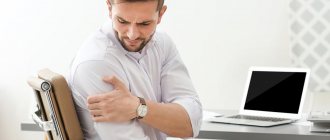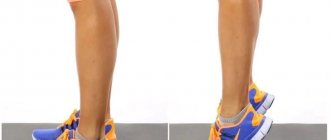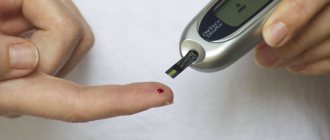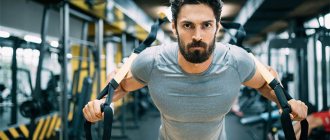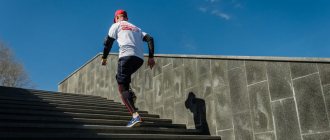Football players who want to quickly get into game shape or achieve their sporting goals often pay maximum attention to the training process, forgetting about rest. Many people think that the more often and more intensely they train, the closer they will become to the desired result and good physical shape. However, the recovery process, in fact, like the training process itself, is of equal importance, and all experienced trainers or doctors talk about this.
Today we will talk about the recovery of athletes and give ten practical tips that will help you quickly get back into shape after heavy physical activity. The recommendations below are universal in nature and are suitable for any athletes, regardless of their chosen sport.
Attention! Our article is intended to be a recommendation, so please consult your trainer or doctor as each body is different and what works for one may not work for another.
Nutrition
After physical activity, it is also important to restore lost energy, which requires proper nutrition. Ideally, eat within an hour after training, and the diet is purely individual and depends on the tasks that you set for yourself. Here you need to consult with specialists, but it’s better not to forget about protein foods + complex carbohydrates so that the muscles can not only recover, but also grow.
Vitamins that will help you recover
Physical exhaustion of the body is provided for by nature, but we also accelerate this process with exhaustive work and excessive loads, plus poor quality nutrition, non-compliance with the drinking regime, and vitamin deficiency.
In case of increased physical activity, nutritionists advise increasing the amount of foods that contain vitamins. Among them:
- To restore the nervous system and muscle tone - vitamin B.
- For health and vitality - vitamin C.
- For the brain and eyes - vitamin A.
- For youth and beauty - vitamin E.
- For strong bones - vitamin D.
Iron helps with depression, in addition, fish oil is needed for the brain, magnesium and calcium for tissues, and folic acid to regulate metabolic processes.
The best way to regain strength is during rest. This is the golden rule that has been used by humanity since time immemorial.
But as the pace of life accelerates, there is less and less time for rest. It is necessary to organize your routine in such a way as to intelligently combine time for rest and active activity, so as not to bring yourself to extreme fatigue.
Fatigue manifests itself in the physical, emotional or psychological sphere. In addition, psychologists also identify spiritual fatigue, which manifests itself in complete disappointment in life, spiritual exhaustion.
Methods of restoring strength for all types of fatigue are passive and active.
Active methods are methods that involve changing the type of activity, for example:
Passive methods include:
- Daytime sleep.
- Tea party.
- Sunbathing.
- Conversation with a friend.
- View funny photos, videos.
Ice bath
When it comes to the recovery of athletes, some people speak positively about taking an ice bath. It seems to us that this is effective if there are any injuries (microtraumas) or a series of too intense training/games. Otherwise, you can get by with a self-massage of ice to tired muscles. Football players, accordingly, cool their legs or lower back with ice, achieving a forced effect of constriction and expansion of blood vessels. This method allows you to remove waste and toxins, as well as further relax the muscles.
How to get rid of sore throat
So, according to the plan, you had, for example, a long distance run. The result is clogged legs (mainly the calf muscle). There are several ways to stretch a tired body and minimize the unpleasant effect that awaits us in 48 hours. To be more precise, there are at least five of them! Muscle recovery is not a very fast process, but it can be speeded up if you follow simple rules.
Mandatory cool down
You finished your run or got off your bike. The feeling of heaviness and fatigue in the legs makes itself felt first. How to relax clogged leg muscles? The first thing you must do is not to collapse, but do what every athlete must do without fail - cool down!
This will relax tense muscles, stretch them and speed up the removal of waste products from the body. The exercises will only take five minutes of your time, but they will save you from future suffering or at least reduce it. “Thank you very much” will be said not only by the muscles, but also by the fascia.
Contrast or ice baths
After a hard training day and a mandatory cool-down (you remember this, right?), you should pamper your body with water treatments. It’s up to you to decide what it will be: just a hot bath, a contrast shower or ice water. Experts differ on what works more effectively.
Just hot water relaxes muscles, raises body temperature and, as a result, accelerates blood. Accelerated blood circulation promotes a faster removal of toxins from the body and an influx of beneficial substances that will be used as “repair bricks”.
A contrast shower performs two functions at once: hot water relaxes and accelerates blood circulation to speed up the process of getting rid of waste products, and cold water relieves inflammation from damaged muscle fibers.
An ice bath or ice pack is a last resort. This should be done in case of very high loads. For example, Craig Alexander, a famous Australian triathlete, after grueling training, immerses his legs in a bath filled with ice water and ice cubes for just a few minutes.
Massage (self-massage using massage rollers and sports massage)
Another good option that can be used both as a cool-down and as a separate method is self-massage using massage rollers or other special massagers.
You can roll tired and clogged leg muscles using cylindrical rollers. There are several options: with a smooth surface (soft and gentle effect), with a ribbed surface (harder effect) and a massage roller with vibration (usually has a ribbed surface).
For self-massage of the pectoral muscles or, if a more targeted effect is needed, it is better to use massage balls of different sizes and hardness.
For example, Blackroll has a special mobile application with training and clear instructions for using massage equipment - BLACKROLL® FASCIA TRAINING (Android, iPhone).
If the load was very serious, it is better not to engage in self-massage, but to contact a specialist who will do this work much more effectively. A sports massage is a controversial pleasure, but after it you will regain the ability to move freely and without pain.
As a preventative measure, we recommend going for a sports massage at least once a month.
Medicines and sports supplements
If none of the above has given the desired effect and healing has not occurred, you can turn to non-steroidal anti-inflammatory drugs. These can be warming gels and ointments: Voltaren-gel, Fastum-gel, Diclofenac, Xefocam. Tablets are not highly recommended, but in emergency cases you can take Diclofenac, Nimesulide or Ibuprofen.
Since prevention is better than cure, it is better to follow preventive measures - take special sports supplements. BCAA and glutamine do a good job of combating this problem. It is also advisable to drink more water, and if this is a long workout, then it is better to replace the water with isotonic drinks.
Attending yoga classes and stretching training
Yoga and stretching classes are more of a preventive measure than an emergency aid. Attending such training sessions at least once a week will not be superfluous. Stretching lengthens muscles, makes the body more flexible and mobile, removes tension from the shoulders and neck, unloads the lumbar region and opens the hip joints.
The ideal option is to use this workout as a cool-down, if possible. For example, if your plan is swimming, cycling, treadmill or strength training, then you can safely go to yoga or stretching. This will be the coolest cool-down for your body!
In addition to the options listed, do not forget about a balanced diet, enough sleep and moderation in training. With good, high-quality food, the body receives microelements that will become building material for tired muscles. During sleep, growth hormone is produced and basic repair work occurs in muscle tissue. Compliance with the training plan and moderation in exercise allows the body to adapt to new loads and reduce pain after exercise.
Dream
This point could have been put in first place, since it is during sleep that the body recovers as much as possible. Only sleep should be complete: at least 8 hours, not under stress and not on a full stomach. Let the body be occupied exclusively with the restoration process and nothing else. A big advantage of sleep is also the production of growth hormone, which is responsible for tissue growth and healing.
Recovery Exercises
Recovery at home after a stroke should begin while still lying down, when the person practically does not get up. Exercises should cover all joint parts of a person, but in this case exercises specifically for the lower limbs will be described in more detail:
ATTENTION! Basic actions in a supine position are indicated for patients who have suffered a complex ischemic or hemorrhagic stroke. Under such circumstances, unilateral paralysis often occurs.
For bedridden patients:
- Hands perform flexion, extension and rotation actions. Clenching your fingers into a fist. Similar movements are made with your feet; you should try to close and open your toes;
- Carry out movements with toes and heels, flexion and extension movements, as well as bending the feet in and out;
- While lying on your back, you need to bend your legs at the knees. Near the ankle joint, hands clasp the shins. Using your hands, you need to bend your legs in the area of the shin, while the foot does not come off the bed, but only slides along the surface of the bed;
- The legs perform a “bicycle” movement.
Exercises from a sitting position are aimed at strengthening the muscular base of the arms and back. They are necessary as preparatory measures before walking :
- You need to sit on the bed with your legs down, your arms down and out, grasping the bed. The back arches, the body leans forward, hands hold on to the bed. You need to take a breath, relax and exhale. And so on up to 10 times;
- When sitting on the bed, your legs are not lowered. You need to lift each leg in turn. Throw your arms behind your head and rest them on the bed. Try to lift both legs;
- Sitting, feet on the bed, hands behind your back resting on the bed. The shoulder blades should be brought together and spread apart. The head tilts back and returns to its original position. It is worth breathing correctly at the same time; when moving the shoulder blades back, you inhale, spreading them apart, and exhale.
Exercise therapy from a standing position (legs still can’t walk well, so you need to do it with support on something):
- Lifting small objects while standing, first from a low surface, then from the floor.
- Taking small steps in place, holding onto a support. Then mastering walking skills.
- Stepping your foot over the block, forward and backward.
- Such exercises will restore balance to a person.
Overtraining
Plan your workouts correctly, make a clear plan with your trainer, who will definitely not allow you to exhaust yourself every day, even if you need quick results. Rest is the key to athletic progress, so overtraining is your main enemy, which not everyone recognizes. It is usually the lot of beginners to exhaust themselves regularly and to the maximum, but professionals know the value of proper rest and how it positively affects their results. Be professional!
In this article, we didn’t make any discoveries, we just said banal things that are often forgotten in sports society. Know how to rest and relax properly and you will see that the results will not take long to arrive.
Some basic rules for performing physical therapy
The objectives of kinesiotherapy (physical therapy) include returning physical strength to the muscles of the limbs, if possible, all previously performed movements, as well as the patient’s ability to move and perform standard everyday activities.
When performing exercises to restore limb function, you should follow a few simple rules.
- To activate the affected areas of the brain and activate reserve nerve cells, you should start any exercise with healthy limbs. In this case, it is necessary to warn the patient that he should try to perform the exercises with an immobilized hand as if he were doing it himself (this applies to passive gymnastics). Every simple movement must be voiced by a relative or physician helping the person. So, if you need to raise your hand, the health worker should first warn the patient: “Now I will raise your hand, and you will help me with this. Let's start: raise your hand, once! We lower our hand - two!” Counting during exercises helps you concentrate and tense your muscles to the limit for the jerk.
- The greatest concentration of attention is achieved with closed eyes. This way the patient will not be distracted by extraneous little things that are visible to him. This is even more important if there are strangers in the room.
- It is quite difficult for the patient to concentrate, given the affected areas of the brain. However, you should not give in to slack: day after day, the exercises should be made more difficult or at least replaced with ones that are similar in simplicity, even if no visible results were achieved. Instead of just raising your hands, you can put them on your stomach or reach your ear (nose).
- Since the end result should be the execution of everyday activities, it is necessary to help the patient's brain remember how they are performed. Any everyday items are suitable for this - napkins, toothbrushes, spoons, etc. Imitating simple movements previously performed daily stimulates brain cells. For example, you can do the following exercise: bring a napkin to your lips and wipe them. Of course, the muscles on the paralyzed upper limb are too weak for the patient to feel how he wets his lips with a napkin. To do this, when performing passive gymnastics, you need to lightly press the napkin to your lips so that the person clearly feels the touch.
- From simple exercises you need to gradually move on to complex ones. The patient will not be able to immediately perform a set of movements, so they must first be “broken down” into simple ones. Then you need to gradually increase the score. That is, from “one-two” to “one-two-three-four” (raised your hands - put them on your stomach - raised them again - lowered them) - and thus bring the actions to 16 exercises in a row, without stopping.
With the help of physical therapy and abm therapy sessions, a person learns again, like a baby, ordinary everyday activities and the ability to self-care. The need to eat, wash, and dress independently is natural for a healthy person; he performs all these actions without even thinking. Performing physical therapy exercises with the help of the instructor’s muscular strength, the patient first restores blood circulation in the muscles, develops joints, and only then begins to move independently.
You need to understand that even after the patient begins to sit up on the bed independently and then walk, his muscles at first will still be too weak for him to move with confidence. Therefore, it is necessary to equip the room with special handrails for patients, which they can hold on to, especially such handles are needed in the toilet and bathroom.
Weakness after illness: what to do?
Loss of strength, low performance, drowsiness, apathy - all these symptoms of weakening of the body after illness are quite understandable. Indeed, during the period of fighting the infection, the body lost a lot of strength and wasted a considerable share of its vital resources.
Fortunately, wise nature has thought of everything: in every organism it has built the ability to regenerate, thanks to which, after suffering an illness, it is able not only to maintain vitality, but also to become even stronger. Paradoxically, after recovery, the immune system becomes more resistant to disease, because protective cells, like soldiers after training, acquire new skills in fighting infection.
However, the body does not recover immediately. The recovery period is especially long in young children and older people.
Alas, the modern rhythm does not always allow a person to lie back and wait for his strength to return to him. Often, immediately after an illness, we need to go to work and return to household chores. Therefore, questions arise about how to quickly restore strength after an illness, what medications can speed up the return to a normal rhythm of life.
The website sympaty.net found several answers to this question. There is a set of measures for the regeneration of body systems after an infection:
- A measured rhythm of life with dosed physical and mental stress.
- Proper nutrition.
- Rejection of bad habits.
- Use of medications.
Each of the above measures consists of a whole set of actions, which are worth talking about in more detail.
https://youtu.be/dOIonz0rxb4


